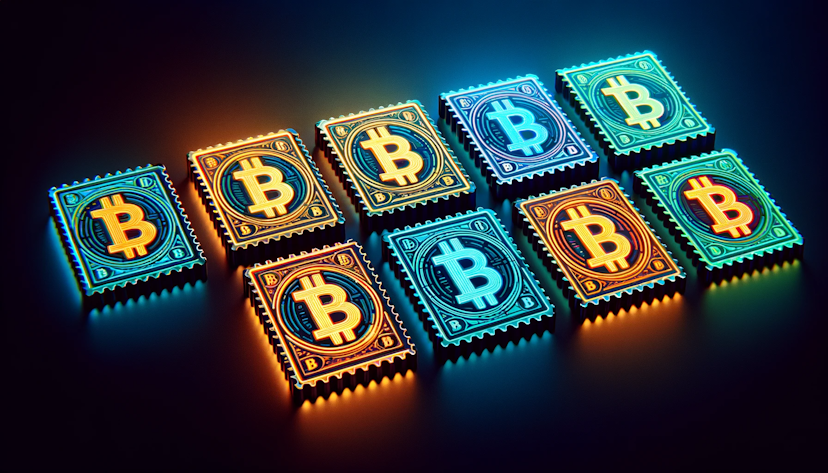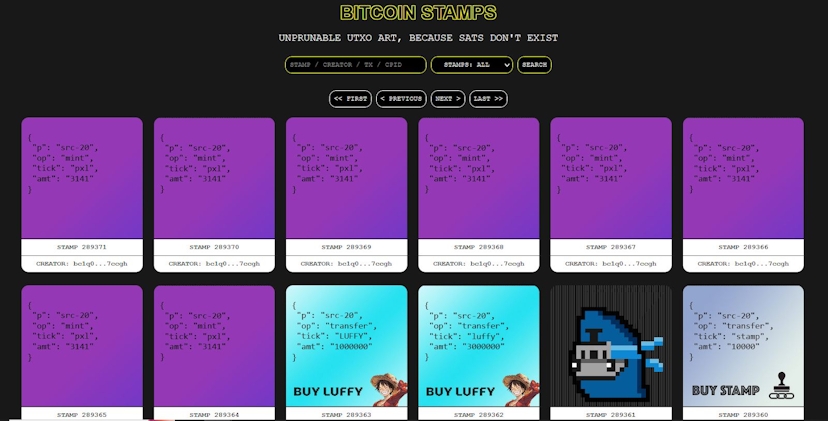Bitcoin Stamps Seek To Improve On Ordinals
While being four times more expensive to mint than Ordinals, SRC-20 tokens live on Bitcoin’s UTXO set, making them unprunable.
By: Pedro Solimano • Loading...
NFTs & Web3
Move over Ordinals, a new token standard is in town.
Born out of the decade-old Counterparty Protocol, known for Rare Pepes and other on-chain art, Bitcoin Stamps, also called SRC-20 tokens, are a new type of digital collectible to land on the most valuable crypto network.
They live on Bitcoin’s UTXO set – Unspent Transaction Output, the residual amount of satoshis that a Bitcoin transaction leaves behind – which, according to their founder, makes them highly valuable for the network.
“The point of Stamps is to offer a method of encoding on-chain art that is highly resilient to tampering and goes a step further than Ordinals by being unprunable,” said Stamps co-founder Mike In Space.

In an exclusive interview with The Defiant, he explained that since Stamps reside in the UTXO set, every Bitcoin node stores them – forever.
Ordinals vs Stamps
Ordinal Inscriptions were the hot topic of 2023. This unique method that allows for arbitrary data to be stored on Bitcoin, invented by Casey Rodarmor, pushed for a thriving Bitcoin ecosystem that goes beyond the monetary use case.
Ordinals have sparked a stream of artwork, games, and protocols on Bitcoin, pushing past its valid but narrow store of value narrative.
While Ordinals have led the more hardliner Bitcoiners to call cries of foul play due to spikes in transaction fees and a congested blockchain, Stamps has been quietly building.
Interestingly, Stamps takes embedding data into Bitcoin a step further but still hasn’t caught the wrath of the laser eyes. At least to the degree that Ordinals have.
In fact, says Mike, “People should be excited about Stamps because it uses the oldest and longest-running blockchain to store data in a way that is more persistent than Ordinals.”
He does acknowledge that a potential bloated blockchain might arise, although he reckons that a bloated UTXO set is the “inevitable outcome of even modest mainstream growth for Bitcoin.”
More Robust Fee Market
Unlike Ordinals, Stamps doesn’t make use of the SegWit discount, which translates into a fourfold cost to mint.
This means, says Mike, that Bitcoin Stamp transactions pay the market rate for block inclusion and are voluntarily included in blocks by miners.
At a time when the Bitcoin security budget – consistently under fire for a diminishing block subsidy and, at least until the appearance of Ordinals, waning transaction fees – has been called into question, Stamps are also pushing for a more robust fee market.
Community Reaction
Stamps, in contrast to Ordinals, have enjoyed less attention from the Bitcoin maximalist community.
That said, voices – especially in the monetary maximalist camp – have expressed opposition. For them, Bitcoin’s sole purpose is to provide neutral money for the world, and its blockchain shouldn’t be used to store arbitrary data.
Mike acknowledged that even some Bitcoin core developers are “anti-Stamps,” but pointed out that SRC-20s are a formalization of the Counterparty protocol, which has existed for nearly a decade, and that these types of tokens constitute valid Bitcoin transactions.
“Those opposed to Bitcoin Stamps should do a better job of out-competing this use case, for block inclusion, if they don't like it,” he said, adding that the blockchain “is meant to be used, and we are paying for that privilege with Stamps.”
Bitcoin Innovation
For years the Bitcoin blockchain has been attacked for being slow, expensive, and incapable of innovation. That’s slowly changing.
Stamps, along with Ordinals, are pushing the boundaries of what’s been possible on the oldest network in the market, fostering a budding environment for developers, artists, and enthusiasts.
Advertisement
Get the best of The Defiant directly in your inbox 💌
Know what matters in Web3 with The Defiant Daily newsletter, every weekday
90k+ investors informed every day. Unsubscribe anytime.